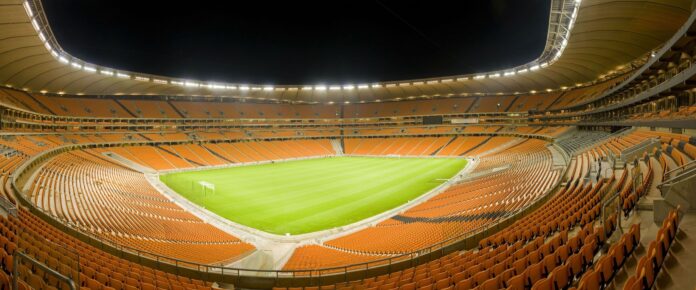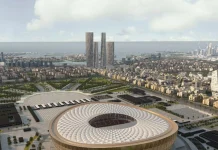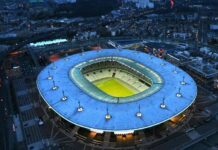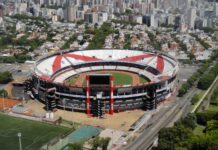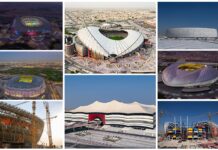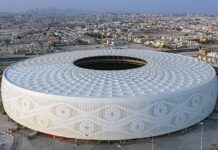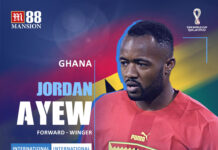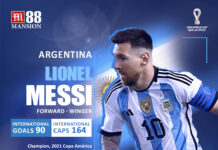In South Africa’s largest city lies the biggest stadium in all of Africa. Officially named as the FNB Stadium, it is more known by its non-commercially named Soccer City, owing to the strict FIFA rules regarding sponsorship.
Located near the fabled Soweto, the sound of the vuvuzelas and the colorful atmosphere of the supporters is the first thing in mind when you think of the 2010 World Cup, which even resonated after the final whistle have been blown in Johannesburg. Like with previous grounds, the stadium had been illuminated with countless classics over the years.
Glittering details in a giant pot
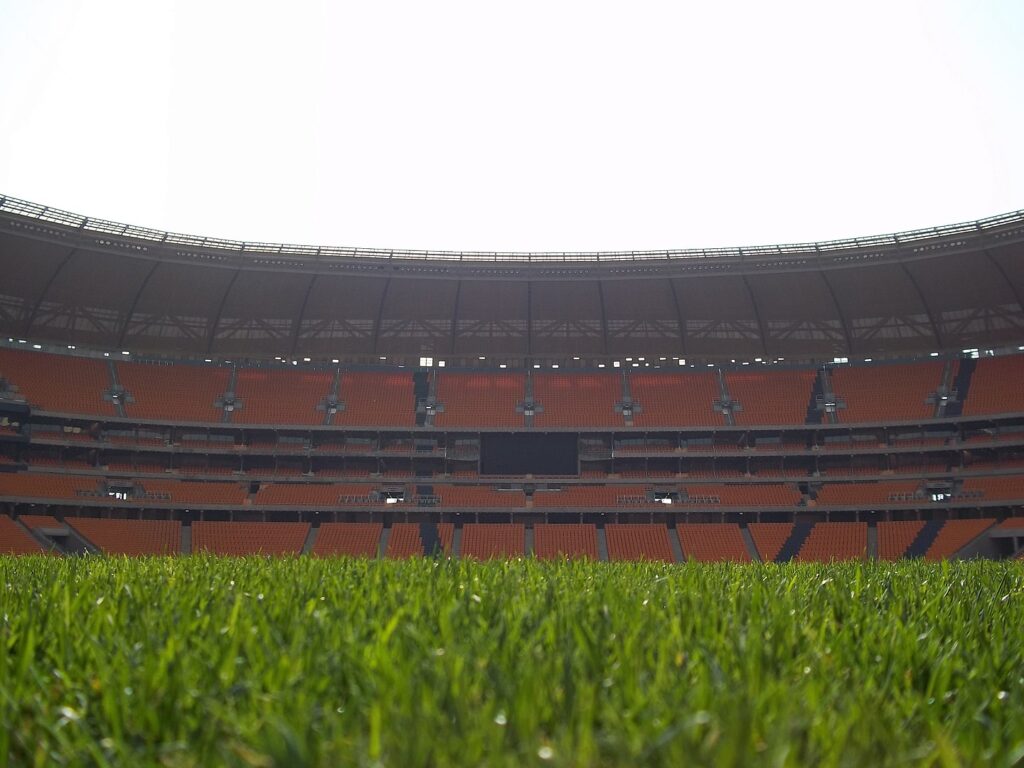
Before the reconstruction, it was an open-ended stadium with a double-decker of a main grandstand.
Its current design was made by fabled architectural firm Populous, among others. The stadium was based from a calabash, which itself has a double meaning (a pot or a bowl that came from the dried gourd) and had a wide roof on it.
Outside of it are the pixelated rendition of the pot, in which there are open and glazed panels
Inside Soccer City’s seating were the black lines that represent the nine other stadiums that hosted the World Cup in 2010, with the tenth line being aimed at Berlin’s Olympic Stadium which played the previous final four years prior.
Famous moments before the World Cup
The end of Apartheid ushered a watershed of South Africa as a nation that transcend beyond sport. It was here that Nelson Mandela gave a speech just after his release from prison in 1990.
A year after their Springboks raised their first-ever Rugby World Cup just up north in Ellis Park, it became the site of the Bafana Bafana’s major success, as the hosts lifted their maiden African title by winning all but one of their six games.
Mark Williams and John Mosheu each bagged four goals, with the former Wolves man fired in a double to blank Tunisia in the Final that was attended by the now-President Mandela and 80,000 more of their compatriots.
In 1997, the Bafana’s golden generation took a step further in Soccer City, with Phil Masinga’s rocket took them to France for their World Cup debut.
Coming of age in 2010
Soccer City resumed its role as the premier footballing venue in 2010, where a completely redesigned one expanded its capacity to 94,736, but the reserved seating for VIPs and the press reduced it by more than 10,000.
Still, it had delivered eight matches (a feat shared by Cape Town and Port Elizabeth), including the opening match between the hosts and Mexico that finished 1-1, the controversial quarterfinal that saw Uruguay snuck past Ghana on a Luis Suarez handball, and the final in which Andres Iniesta’s extra time effort gave Spain their maiden title at Netherlands’ expense.
The closing ceremonies before the World Cup final was the last public event that Nelson Mandela attended, as he passed away three years later and the Soccer City was the site of his memorial before his state funeral.

